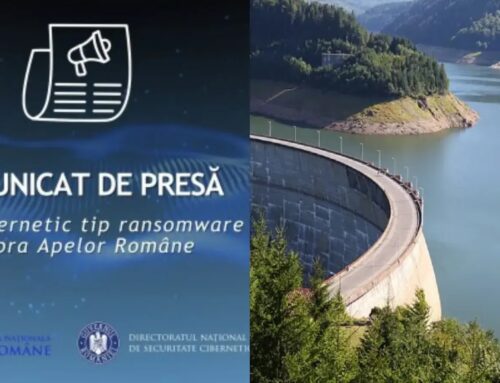
New KAWA4096’s Ransomware Leverages Windows Management Instrumentation to Delete Shadow Copies
Unmasking KAWA4096: The Latest Ransomware Weaponizing WMI for Data Destruction
The digital threat landscape is in constant flux, with new and increasingly sophisticated ransomware variants emerging to challenge organizational defenses. One such formidable adversary recently detected is KAWA4096, a ransomware strain exhibiting advanced evasion tactics and a concerning ability to quickly compromise systems. Named after the Japanese word for “river,” this malicious software, first observed in June 2025, has already impacted at least 11 victims across various regions, including the United States, highlighting its rapid proliferation and destructive potential.
Understanding KAWA4096’s unique modus operandi, particularly its leveraging of Windows Management Instrumentation (WMI) to delete shadow copies, is crucial for developing robust defense strategies. This blog post delves into the specifics of KAWA4096, its impact, and critical remediation actions to protect your assets.
KAWA4096: A New Breed of Ransomware
KAWA4096 distinguishes itself through several key characteristics that professional security analysts will find particularly concerning:
- Advanced Evasion Techniques: While specific evasion methods aren’t fully disclosed in the initial reports, the mention of “advanced evasion techniques” suggests capabilities beyond standard obfuscation, potentially including anti-analysis or anti-sandbox mechanisms.
- Borrowing Design Elements: The ransomware reportedly incorporates design elements from established threat actors. This implies the developers behind KAWA4096 are not novice, but rather highly skilled individuals or groups who have studied successful ransomware operations and integrated their most effective components. This could include encryption algorithms, communication protocols, or even command-and-control (C2) infrastructure designs.
- Rapid Deployment and Impact: Surfacing in June 2025 and quickly claiming 11 victims indicates an aggressive deployment strategy and effective infection vectors. Organizations globally must assume they are potential targets.
The Critical Role of WMI in KAWA4096’s Attack Chain
Perhaps the most alarming aspect of KAWA4096 lies in its exploitation of Windows Management Instrumentation (WMI) to sabotage recovery efforts. WMI is a powerful, built-in Windows component used for managing and monitoring system resources. While legitimate, its power can be incredibly destructive when misused by malicious actors.
KAWA4096 leverages WMI specifically to destroy shadow copies. Shadow copies, also known as Volume Shadow Copies, are snapshot backups of files and volumes that Windows creates to allow users to restore previous versions of files or even entire systems. By deleting these shadow copies, KAWA4096 severely hampers an organization’s ability to recover encrypted data without paying the ransom, effectively increasing the attacker’s leverage. This technique is not entirely new but its persistent and effective use by new ransomware strains like KAWA4096 underscores its effectiveness.
Remediation Actions and Proactive Defenses
Mitigating the threat posed by KAWA4096 requires a multi-layered approach focusing on prevention, detection, and response. The following remediation actions are critical:
- Robust Backup Strategy: Implement and regularly test a 3-2-1 backup strategy: at least three copies of your data, stored on two different media, with one copy offsite and air-gapped. Ensure backups are immutable and protected from network access to prevent their compromise by ransomware.
- Endpoint Detection and Response (EDR) Systems: Deploy and maintain EDR solutions for real-time monitoring of endpoint activities. EDRs can detect anomalous behavior indicative of ransomware activity, including attempts to manipulate WMI or delete shadow copies.
- Network Segmentation: Isolate critical systems and sensitive data through network segmentation. This limits the lateral movement of ransomware within your network if an initial compromise occurs.
- User Account Control (UAC) Best Practices: Enforce strong UAC policies to minimize the privileges of user accounts. Restrict administrative privileges to only those who absolutely require them and ensure two-factor authentication (2FA) is used for all privileged accounts.
- Vulnerability Management and Patching: Regularly patch and update all operating systems, applications, and network devices. Ransomware often exploits known vulnerabilities, making prompt patching a vital defense. While KAWA4096’s specific initial access vector isn’t detailed, addressing known vulnerabilities like CVE-2021-34473 (a well-known vulnerability often associated with PrintNightmare) or CVE-2021-42321 on Exchange servers can significantly reduce the attack surface.
- WMI Hardening and Monitoring: Implement strict monitoring of WMI activity. Look for unusual WMI queries or script executions, especially those related to VSS (Volume Shadow Copy Service) command-line tools (e.g.,
vssadmin.exe) or PowerShell cmdlets aiming to delete shadow copies. Consider implementing Windows Event Log forwarding to a SIEM for centralized analysis. - Security Awareness Training: Educate employees about phishing, social engineering tactics, and safe browsing habits, as these are common initial infection vectors for ransomware.
Tools for Detection and Mitigation
Leveraging the right tools is essential for effectively combatting ransomware threats like KAWA4096.
| Tool Name | Purpose | Link |
|---|---|---|
| Microsoft Defender for Endpoint | Advanced EDR capabilities, behavioral analysis, WMI activity monitoring. | Official Website |
| Sysmon (Sysinternals) | Detailed system activity monitoring, including process creation, network connections, and WMI event logging. Configurable to log specific WMI activities indicative of attack. | Microsoft Docs |
| Veeam Backup & Replication | Off-site, immutable backups for rapid recovery, including ransomware-resilient features. | Official Website |
| Splunk Enterprise Security | SIEM for centralized log analysis, threat detection, and incident response, capable of ingesting WMI logs. | Official Website |
Conclusion
KAWA4096 represents a significant and evolving threat in the ransomware landscape, leveraging powerful native Windows features like WMI for maximum destructive impact. Its rapid emergence and successful compromises underscore the urgent need for organizations to bolster their cybersecurity defenses. By implementing robust backup strategies, deploying advanced endpoint protection, segmenting networks, and continuously monitoring for anomalous WMI activity, organizations can significantly reduce their risk profile and enhance their resilience against sophisticated threats like KAWA4096.





